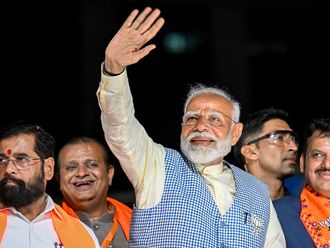On the face of it, it’s a 50-50 election result. Maharastra to the BJP and allies and Jharkhand to the JMM-Congress combine. But the impact is more complex. First of all, the resounding victory of the BJP and its allies in Maharashtra cannot be overstated.
This is India’s second largest state in terms of seats to Parliament. It is where the financial capital of the country lies. The Congress and its allies had done very well in the Lok Sabha polls held barely 6 months ago. And yet, today they were routed. These are the big takeaways from the assembly polls:
1. First Haryana, now Maharashtra. The BJP’s back to back wins have finished the narrative of it being a weakened party in Modi’s third term by winning only 240 Lok Sabha seats.
This is a resurgent BJP which has not let the Lok Sabha setback hold it down. In fact, they seem to have emerged stronger. And ahead of Bihar’s crucial elections next year, it gives the party huge momentum.
2. The BJP/RSS is preparing for life after Modi: in Haryana as well as these polls, the Prime Minister was not the central figure of the BJP’s campaign. Instead, they relied on local leaders to see them through. And the RSS worked hard on the ground.
This could mean the beginnings of a plan to see who will succeed Narendra Modi. Modi is undoubtedly the most popular leader the BJP has today but the party is also trying to learn how to win without him on the mandate.
3. Congress weakened: Haryana defeat was a shocker for the Congress. The party also performed dismally in Jammu and Kashmir. Now its performance in Maharashtra in particular should have its leadership seriously worried. It has been decimated in the state. And they are the weak link in Jharkhand as well, riding on the shoulders of the JMM.
After winning 99 seats in the Lok Sabha polls, the Congress had a spring in its step. These results have come as a huge setback and once again prove that over confidence is hurting the party. Rahul Gandhi did only a handful of rallies in Maharashtra, much like in Jammu where they faltered.
4. Women and the welfare vote: This may have been the most important factor that helped the BJP — Shinde Sena -Ajit Pawar NCP win Maharastra. Chief Minister Eknath Shinde’s monthly stipend of 1500 Rupees for poor women clearly had a huge impact on the ground.
Increasingly in each state, women voters are being wooed by all parties as welfare schemes become the gamechangers. In Maharashtra, the turnout of women voters went up by over 6 per cent as compared to the last assembly poll.
5. Opposition morale hit: As another parliament session starts- one which expects fireworks over key issues like the Adani controversy- the opposition morale is low. Despite the JMM’s good performance in Jharkhand and the JKNC’s huge win in Jammu and Kashmir, the Congress’ poor performance puts the INDIA bloc on the back foot.
6) The BJP’s electoral machinery: combined with the RSS, the BJP is still a formidable electoral force. The way the worked to turn their fortunes around in Maharashtra is a story in itself. Local level meetings on the ground, quietly working to consolidate the OBC vote, a kind of micromanagement not seen before.
The BJP threw everything at the campaign at the ground level. The MVA was missing and had no real message for voters other than what they had offered in the general election. The Congress pitch of changes to the constitution may have worked in the centre, but found no resonance in assembly elections.











